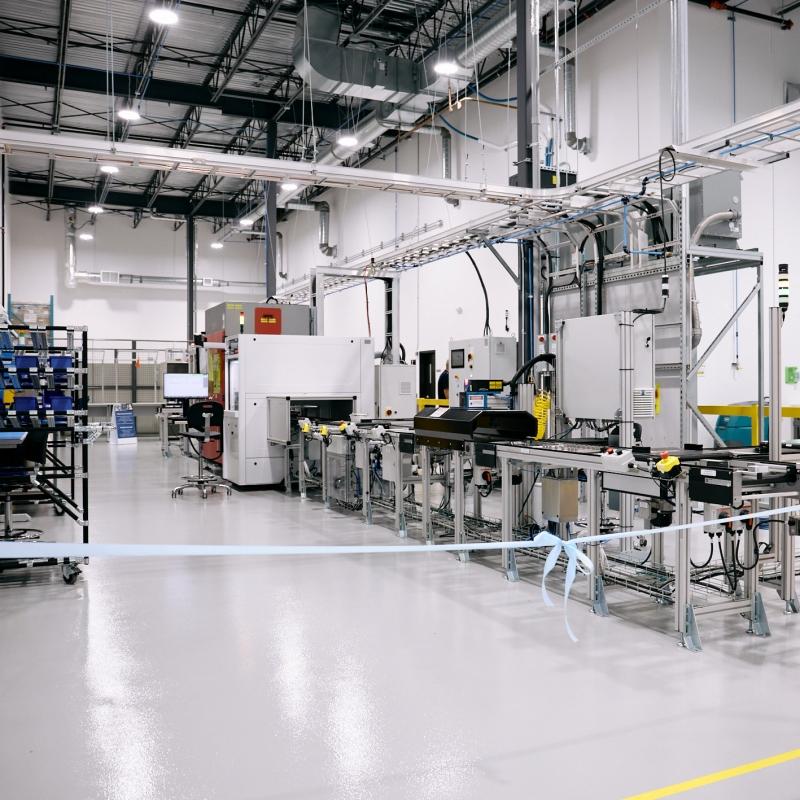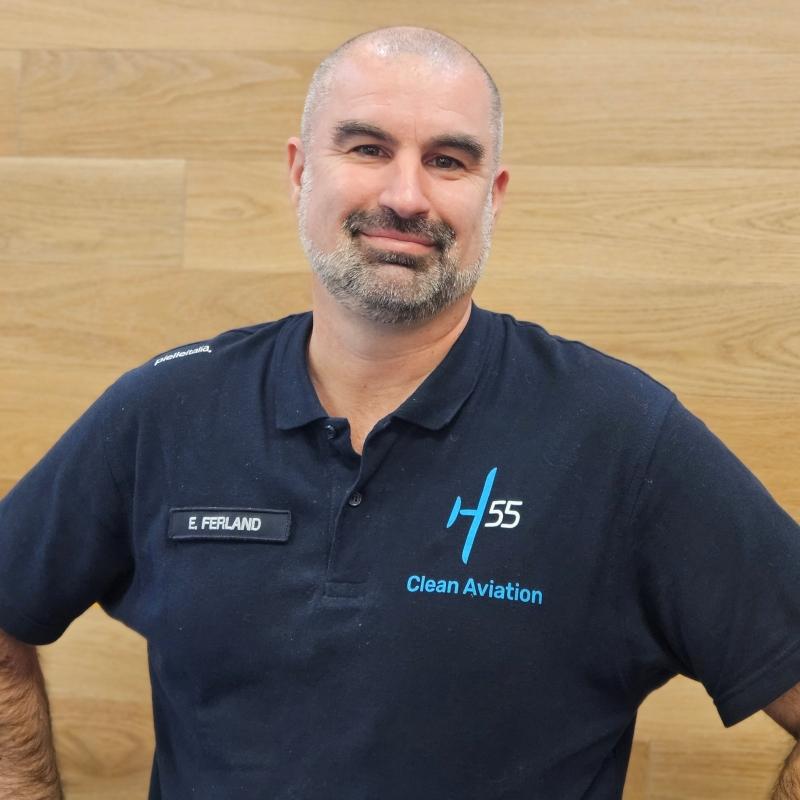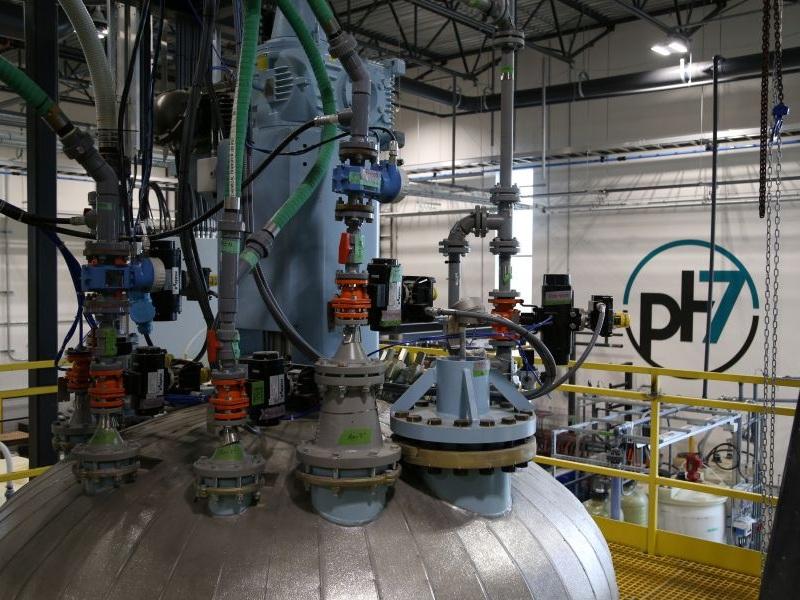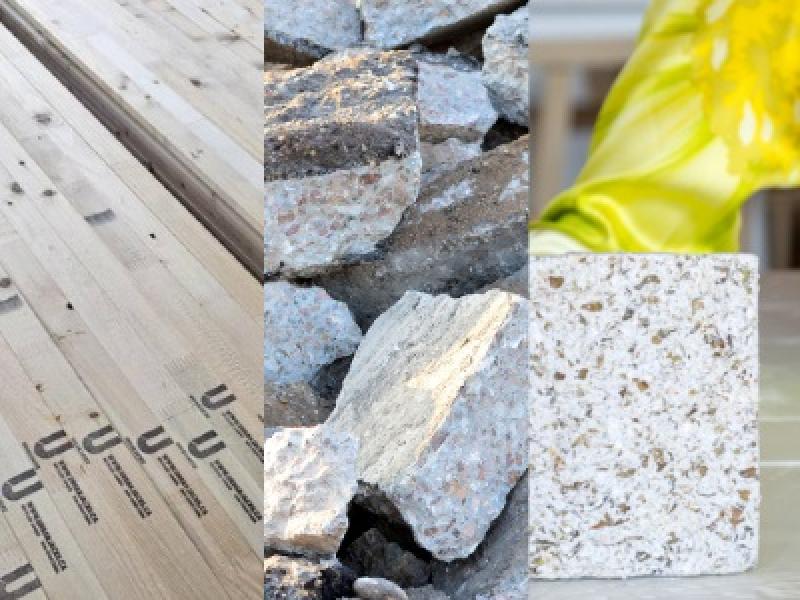
Electric airplane battery manufacturer H55 recently inaugurated its new production facility in Longueil, Que. in order to get closer to its North American clients.
“There were three customers from Canada that we have business (with), most notably Pratt and Whitney, CAE and Harbour Air in Vancouver . . . Hence it became quite logical to have a footprint in North America,” Etienne Ferland, general manager of H55 Canada, told Sustainable Biz Canada in an interview.
“. . . we’re moving from a pre-production phase to a production phase in the next few weeks,” he said.
It is the next step in a journey that began in 2023 when the company hired its first employee, and the facility will employ “a bit more than 20 people,” according to Ferland. There is a potential to grow to more than 100 employees, if market demand supports this, he added.
The facility — which broke ground late in 2023 — will host production as well as house an engineering component for research and development, he said.
Switzerland-based H55 was founded in 2017 by three former members of the Solar Impulse team: André Borschberg, Sébastien Demont and Gregory Blatt. The first solar-powered global circumnavigation plane flight was completed by Bertrand Piccard and Borschberg in 2016.
It is the “technological spin-off of Solar Impulse,” according to the company.
Why H55 chose Quebec
For Ferland, the location made a lot of sense. “When we talk aerospace in Canada, Montreal is definitely the place. There are three airports around Montreal, and the one around Longueuil, which we are on . . . gives me access for the rest of North America . . . attracting key players on decarbonization.”
The facility is located inside the city’s aerospace innovation hub. “The zone that is developing around here is attracting key players and there’s a lot of talent . . . there’s going to be added university focus on aerospace. So that’s going to give us an infrastructure right on our doorstep,” Ferland said.
The company has already sold more than 100 systems for the Bristell B23 Energic platform from manufacturer BRM AERO.
H55 is taking aim at two segments of the industry, Ferland said, in-flight training schools and private owners.
Focus on quality control
Because an airplane engine essentially has to operate perfectly, the company is placing a large emphasis on the quality of its components at the new facility.
“We actually have set up an entire room dedicated to inspections of the cells, because if there’s an issue, that means there’s a chemical reaction within the cell, so we have to discard it,” Ferland said.
“Obviously, that same inspection equipment also measures all the electrical properties of the cell, making sure that every cell that we put into our modules has exactly the right properties that we want, even though the supplier provides conforming cells. We go way beyond and we re-inspect every single one of them.”
While he wouldn’t say how much the company is spending on the new factory, both the Quebec and Canadian governments have invested $10 million to support its building.
Holistic certification process

So what makes the company’s battery so unique?
“I don’t want to be categoric, but I don’t believe there’s another provider of batteries out there that does certification on the entire propulsion system,” Ferland said.
As well, battery manufactures have to cope with some challenges whereby the heat in a battery cell suddenly rises.
“H55 . . . implemented technology that prevents thermal runaway, which means that if ever there’s one cell that starts misbehaving, it will not contaminate the next cell," Ferland said. "We are doing preventive and containment, which results in a very different pilot experience if ever there’s an issue, if ever there’s an event.”
Besides the obvious green benefit in which 100 per cent of aviation fuel is eliminated, H55 can also re-deploy spent batteries.
“When the battery is being removed or replaced, because a charge retention rate is not great, then the battery still has around 80 per cent rate of retention," he said. "It has a significant social and economic value that can easily be applied to another industry, to another customer, which is not aerospace but it could be a mine, it could be other types of customers that need a highly secure and safe product.”
“We’re talking circularity. It’s important to talk about first life, but it’s critical to talk about second life as well, before the product ends up in a recycle phase.”
In addition, when the technology is employed in a hybrid aircraft, H55 customers are reporting significant fuel reduction, further amplifying its environmentally friendly properties.
“When you’re having a disruptive technology that brings in 30 per cent (fuel) reduction, that’s a significant step for the entire industry. We’re very proud of that."










